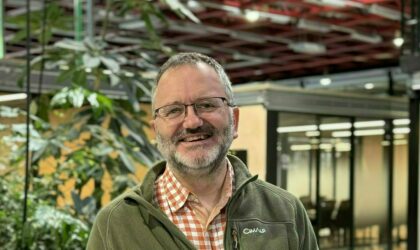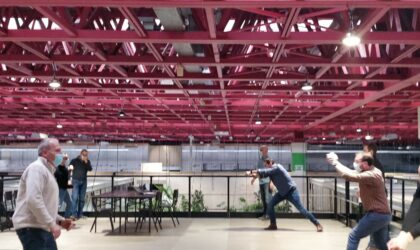What's up
Are you ready to test AISIN's driving simulator?

About three years ago, AISIN got into the VIADUCT project, a UX (User eXperience) research project subsidized by the Walloon Region and in collaboration with Acapela, CETIC, Multitel, UCLouvain and UNamur. VIADUCT stands for “Voice Interface for Autonomous Driving based on User experienCe Techniques”.
As it’s an automotive-related project, the company started by using real cars, but quickly realized that they could not test everything they wanted to, for example, dangerous situations. The need to use a driving simulator became obvious. After analyzing the market offer in that area and not having found anything that matched their needs, they decided to build their own simulator based on the Open-Source Carla project. It is now a central tool to test most of their concepts.
After one year and a half of continuous development, it’s time to proudly present it to the Walloon ecosystem. Step by step, the simulator has been enriched with an engine sound, rear mirrors, the possibility to drive with a top-quality steering wheel with force feedback, AISIN Driver Monitoring System, a vocal assistant (with Acapela’s text-to-speech and speech recognition technologies), and biometric data recording hardware (ECG and EDA).
The Driver Monitoring System and the biometric data are able to determine if the driver is stressed, if his/her ongoing tasks induce cognitive load or not, if the driver is distracted, etc. As the VIADUCT project relates to autonomous driving and driving assistance, it is for sure equipped with the latest ADAS technologies: Adaptive Cruise Control, Lane Keeping Assist, Blind Spot Monitoring, Automatic Emergency Braking, and more. Several tools have also been developed to simplify and accelerate UX research, from the conception of a scenario, its execution, to the post-drive analysis of all the recorded data.
But this simulator is also a fantastic platform to validate autonomous driving algorithms, simulate sensors like camera, radar, Lidar, for example, and test computer vision algorithms. With that technology, AISIN can also do scientific research about drivers’ behavior and is willing to collaborate with other partners on new ideas.
In the context of VIADUCT project, they also developed technologies like multimodal identification (face and voice) and hands-on wheel detection based on camera, using Artificial Intelligence. These technologies could be integrated into the driving simulator if some use-cases require them. Whether you are part of a university or college, research center, company or not and are inspired by what we are doing, we’d be glad to hear from you.


